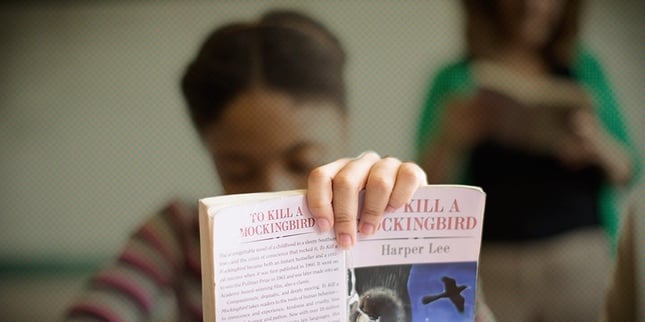
Do you teach Harper Lee's classic To Kill a Mockingbird?
Check out these two flipped classroom exercises that can help engage students in the issues central to the novel—and their own lives—including race, class, gender, justice, and moral growth. The first exercise activates student thinking about "stereotype threat," or how stereotypes can negatively affect us in our daily lives. The second sets the historical setting of To Kill a Mockingbird. These exercises can be done independently or together as you introduce the novel to your students. And students can complete them on their own for homework, or you can introduce them as part of a class activity.
I. Setting the Setting of To Kill a Mockingbird
To Kill a Mockingbird explores Harper Lee's fictional Maycomb, Alabama, through the eyes of young Scout Finch. This video helps students understand the unwritten rules of Depression-era rural Southern life and the system of racial separation that shape the choices Scout and the people around her make.
1. Have students watch the video.
2. After they watch, pose the following questions. Students may re-watch the video to guide their responses:
- Think about a community in which you are a member—your school, religious community, family, or group of friends. What are some of the most important rules in that community? Are these rules written down? What are the most important unwritten rules, those not written down but about which everyone is aware?
- Write about a pivotal choice you have made in your life or an experience you have had that was influenced by the setting of your community. What other options might have been available to you if you lived in a different place and time? What circumstances would have influenced you to make a different decision?
II. How Stereotypes Affect Us and What We Can Do
Understanding the concept of "stereotype threat" will help students unpack both the deeper themes of To Kill a Mockingbird, like the legacy of segregation and the effects of stereotyping on identity, as well as their own experiences with stereotyping and bias. In this video, Dr. Claude Steele, the Dean of the Stanford School of Education and a social psychologist, explains how stereotype threat can influence our behavior and affect our performance on tests, in social situations, and in other areas of our lives.
1. Have students watch the video.
2. After they watch, pose the following questions. Students may re-watch the video to guide their responses:
- How does Dr. Steele define stereotype threat? What does he say is the threat that stereotypes pose, and how does that threat affect the way people function?
- Who does stereotype threat affect?
- In the video, former Facing History student Jonathan Lykes describes his personal experiences with stereotypes. Summarize the ways in which stereotypes have affected him.
- In the video, actress and activist Sonja Sohn says she lost a lot of confidence when she was the only black girl in a class of white students. Why? What role did stereotypes play for her?
- Summarize the experiment Dr. Steele describes. What stereotype about women was at the heart of his experiment? What effect did the stereotype have? How was he able to eliminate the effects of stereotype threat in this situation?
- According to Dr. Steele, how does stereotype threat help explain the impact of history on the present?
- Based on what you have learned from this video, explain in your own words how stereotypes may impact how you think about your own identity.
Facing History and Ourselves' Teaching Mockingbird guide interweaves literary analysis with historical context, multimedia resources, and innovative teaching strategies. The guide includes Common Core-aligned handouts, close reading exercises, and connection questions that allow students to build a complex understanding of the historical realities and big moral questions at the heart of Harper Lee's classic, To Kill a Mockingbird.
Do you remember the first time you read To Kill a Mockingbird? Comment below!


